John Hurrell – 4 December, 2019
There are two teams here: delissimo gals versus yummy guys. Five svelte multi-racial femmes (posing awkwardly, as if in a fashion shoot, clutching Molotov cocktails and oxy-acetylene cutting torches) are about to blow the priapic patriarchy to smithereens. Four brutish brawny hunks straining with their shirts off (overtones of Cézanne's Bathers and Iwo Jima marines) are huffing and puffing to put it together again. In this nihilistic piss-take, loaded with tropes, nothing changes. Boo hoo.
Allegorical images are quite rare in contemporary art, and understandably these highly ambiguous, linked up Heather Straka photographs—they have the antiqued look (caused by the impeccably controlled light and fine detail) of Andrew Wyeth egg tempera interiors—are open to a number of interpretations.
Politically Straka‘s apparent banner of ‘Vive La Révolution’—gloating over the demolition of a room (read Western Civilization) and its piano (ie. colonialist arts culture)—is I think obviously ironic. Many of the images are mischievous and provocative, being filled with art historical references and calculatedly over reductive in their apparent ‘meanings.’
There are two teams here: delissimo gals versus yummy guys. Five svelte multi-racial femmes (posing awkwardly, as if in a fashion shoot, clutching Molotov cocktails and oxy-acetylene cutting torches) are about to blow the priapic patriarchy to smithereens. Four brutish brawny hunks straining with their shirts off (overtones of Cézanne’s Bathers and Iwo Jima marines) are huffing and puffing to put it together again. In this nihilistic piss-take, loaded with tropes, nothing changes. Boo hoo.
Another image shows a mini-skirted drag queen screaming with delight at the smoke and rubble-filled mayhem while she pounds the ivories. The splintering cacophony is celebratory.
Other images are much more contemplative and subdued. A pensive brown-haired boy, sitting in the background and through the smoke calmly watching the he-men strain re-erecting the collapsed ceiling and walls, is also present in two other images—in both cases ruefully eyeballing the camera. Once there was a future.
In one image, a priest is standing behind the boy. Paradoxically the dismissive mood does not extend to institutionalised religion. The priest seems genuinely good and keen to help the young. There is no sense he is a predator.
These five images are far darker (literally) than the earlier more light-infused photographs Straka has created over the years. They look like magazine illustrations: art historic radical chic.
Some might think these shots are about the ‘Me Too’ movement but they suggest much more than that. They seem to smirk at the clubbiness of identity politics, the presumed values of togetherness, the search for symbols as rallying points for communities.
Nicely installed the acting-out protagonists watch each other, especially the boy (on a slightly higher level) watching himself and the priest in the distance, or when with the hulks, watching the frenetic queen across the room.
As a set that relies on careful architectural positioning, these interconnected works make a provocatively lively installation. Great conversation starters if you want to talk about ambiguity.
John Hurrell
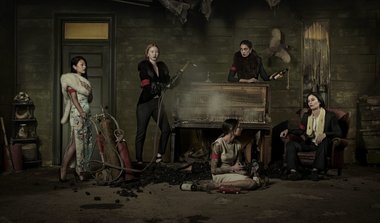
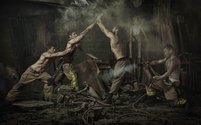
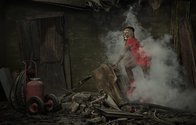
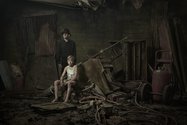
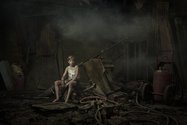
 Advertising in this column
Advertising in this column Two Rooms presents a program of residencies and projects
Two Rooms presents a program of residencies and projects



This Discussion has 0 comments.
Comment
Participate
Register to Participate.
Sign in
Sign in to an existing account.